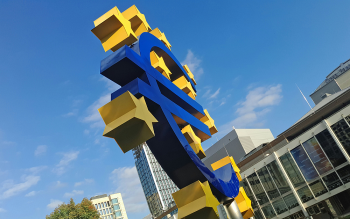

With the successful conclusion of the project QCDC (or “Quantum Computers for Datacentres”), Europe can now boast its own cloud-based computing service for trapped-ion quantum computers. Funded by the European Innovation Council, the service gives researchers access to machines to perform advanced quantum computing tasks on European devices.
Although current quantum devices do not outperform traditional supercomputers, the new capabilities have the potential to usher in a new era of innovation in healthcare and industrial advancements.
Building on the results from the project, some of the small research teams have been able to realise the first hardware implementations of advanced calculations for biochemical research and computational fluid dynamics. Meanwhile, others have been able to simulate materials with unique properties and optimise manufacturing processes to improve efficiency and reduce waste in industrial production.
With groundbreaking access to quantum machines, scientists and engineers have simulated complex molecular interactions. These initial proof-of-concept demonstrations have enabled researchers to investigate their potential applications in sectors such as electronics, energy storage, and manufacturing.
Quantum computers are powerful devices that leverage the fundamental laws of quantum mechanics to process information in a fundamentally different way, which might allow them to perform calculations which are impossible for classical computers.
Unlike traditional computers, which process data in a linear fashion, quantum computers exploit quantum entanglement to process information, giving them the ability to simulate highly complex systems like molecules and materials with unmatched speed and accuracy.
Imagine the task of trying to solve a maze: a traditional computer would explore every single path one at a time, checking each route until it finds the solution. In contrast, a quantum computer can ‘compare’ all the possible paths at once, evaluating them in parallel and choosing the best route.
To put this into perspective, the total computing power from a vast data centre filled with rows of traditional computers, stretching across several football fields, might not be able to match the speed and capability of just one quantum machine operating at its full capacity.
These complex tasks that can be challenging for traditional computing, or even supercomputers, will eventually be made possible with quantum machines developed and operated by AQT (Alpine Quantum Technologies) – an Innsbruck-based company specialising in general-purpose ion-trap quantum computing.

Rack-mounted iontrap quantum processor
A noteworthy collaboration took place between AQT and a team from QC Ware (USA), Covestro (Germany), and Boehringer Ingelheim (Germany), who all worked together to simulate the interaction energies of intermediate states in a chemical reaction – a key task in quantum chemistry and an essential step in understanding the complex molecular interactions in the Nitrogen Cycle.
By using a quantum algorithm called Variational Quantum Eigensolver (VQE), the team was able to calculate the molecule’s energy, even on noisy intermediate-scale quantum (NISQ) devices.
The VQE algorithm works by creating a trial state of the molecule and then adjusting it to find the most stable, lowest-energy configuration. Even though the quantum computer used is still in its early stages, the results were impressively accurate, closely matching classical calculations.
This leap in computational power means that the advantages of quantum computing for drug development can arrive earlier, while material scientists can unlock new possibilities in energy storage, sustainability, and manufacturing.
QCDC Project Leader and Director of Quantum Technologies at AQT, Juris Ulmanis, said: “This project represents a significant step forward in making quantum computing a practical tool for researchers across Europe.
“By giving scientists access to AQT’s world-class quantum technology, we’ve enabled them to solve problems that were previously out of reach for quantum computers. Whether it’s drug discovery, designing better materials, or improving sustainability, the potential for quantum computing is vast, and we’re excited to see what impact it can have across industries.”
While the QCDC project has concluded, its impact is only just beginning. It has equipped researchers with the tools to address some of the world’s most complex challenges.
With the QCDC project now completed, Europe has taken a giant leap toward establishing itself as a leader in quantum computing. From biochemical simulations to material science and manufacturing optimisation, the project has demonstrated the potential of quantum technologies to transform industries and solve global challenges. As Europe continues to build its quantum ecosystem, this groundbreaking work will be the foundation for the next generation of quantum-driven innovations.
The QCDC project strengthened Europe’s technological sovereignty by providing local access to world-class quantum computing, eliminating reliance on non-EU providers. This enables European researchers and industries to innovate independently, protecting critical data and research from external influence.



